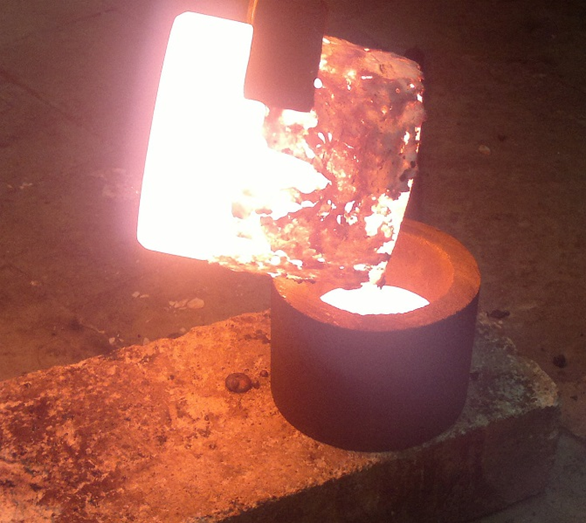Laboratory (workshops) and equipment base - information on available research infrastructure and specialist equipment
Corrosion and Protective Coatings Research Laboratory
- Salt chamber CORROTHERM - 610 Erichsen.
- Koesternich chamber HYGROTHERM - 519 Erichsen.
- Laboratory stand for immersion metallization.
- Stand for high-temperature corrosion testing.
Chemical Analysis Laboratory
- Optical spectrometer for measuring and identifying elements in the sample matrix based on the ionization of elements in the sample - ICP_PRO X Duo S/N ICAPPRO10652.
Model Research Workshop
- Module for precise control of liquid (water) flow in/out in the range of 10 to 42 l/min, (water plus marker) in the range of 1 to 23 l/min with the possibility of continuous data recording equipped with a multi-channel controller/signal recorder - MultiCon CMC, AR642 APAR.
- Module for precise control of gas (air) flow in the range of 0.5 to 30 l/min with the possibility of continuous data recording equipped with a multi-channel controller/signal recorder - MultiCon CMC.
- Module for continuous recording of measurement signals in/out. (changes in electrical conductivity of the liquid) – equipped with a multi-channel signal recorder - MultiCon CMC and a set of conductometric conductivity sensors (GCT20K and MOSTEC M3836 enabling measurement in the range of 20-5000 µS (20µS - 20000µS).
- Segmented physical model of the COS device (tundish, crystallizer) with the possibility of using different models of tundish ladles from 1 to 6 outlets.
- Universal physical model of the station for blowing steel with inert gases in a steel ladle - with the possibility of testing various types of industrial gas-permeable shapes.
- Physical model of the station for blowing steel with gases in a steel ladle - with the possibility of simultaneously blowing the bath through one, two or three gas-permeable shapes installed in the bottom of the model.
- Physical model of the station for blowing steel with inert gases with the possibility of using high flow rates gas.
- Physical model of a combined blowing oxygen converter.
- Model of the RH device.
- Model of the URO 200 batch refining reactor with equipment enabling the use of various types of rotors equipped with precise control and measurement equipment.
- Model of the URC 7000 continuous refining reactor with control and measurement equipment.
- Module for recording and analyzing 4K images in Full HD mode.
Joining Technology Workshop
- TIG, MIG, MAG, SAW welding equipment.
- VT1+2, MT1+2, PT1+2, RT1+2, UT1+2 testing equipment.
- Portable ultrasonic hardness tester.
- Metallographic testing laboratory equipped with a stereoscopic and light microscope.
- JEOL JCM-6000 scanning electron microscope.
- High-temperature corrosion testing station up to 1200°C in an atmosphere of aggressive gases.
Hydrometallurgy and Biometallurgy Laboratory
- Chemical reactor with thermostat for leaching.
- SONOPULS ultrasonic homogenizer.
- Korona L Spalab ozone generator.
- Zeiss Axio Imager biological microscope.
- Acidithiobacillus bacteria.
- RedLine laboratory dryer.
- Elpin 358A laboratory shaker.
- Rocker, Chemker 300 vacuum pump.
- Elkon laboratory incubator.
- Mixers, shakers, laboratory scales, physicochemical parameter meters.
Other equipment
- Netzsch STA449 Jupiter F3 thermal analyzer.
- Czylok resistance chamber and pit furnaces, maximum operating temperature 1500°C.
- SecoWarwick induction vacuum furnace, maximum operating temperature 1800°C.
- Open induction furnace with a capacity of max. 1.5 kg of metallic charge materials.
- Netzsch thermal analyzer, maximum operating temperature 1500°C.
- Laboratory electrolyzer.
- Devices for testing selected functional properties of coatings, the tests consist of performing comparative wear tests in specific or model conditions of corrosive, abrasive and erosive wear and combined processes also at elevated temperatures up to 850°C.
- Devices for producing coatings using flame, arc, supersonic and Cold Spray thermal spraying methods, as well as gas, arc and plasma surfacing.
- Devices for diagnostics of coatings and protective layers, using destructive and non-destructive methods. Destructive tests include assessment of the structure of coatings, their adhesion to the substrate, microhardness, porosity, while non-destructive tests include visual assessment, thickness, hardness and tightness measurements.
- CNC PRO LEAD 1010 milling plotter.
- 3D printers (FDM and DLP/LCD).
Chemistry and Physical Chemistry Laboratory (didactic)










